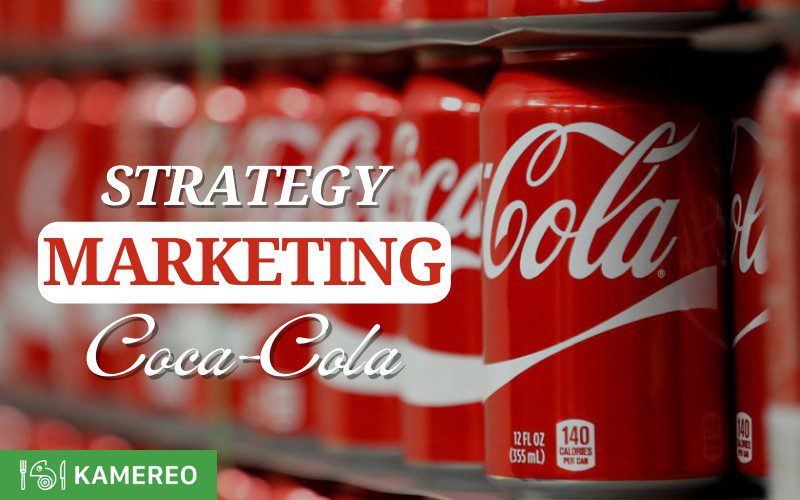Coca-Cola is one of the leading beverage brands in the world in terms of product consumption. To achieve this position, the company has implemented various marketing strategies since 1892. This has made the brand familiar in the beverage industry. Let’s explore Coca-Cola’s marketing strategy in the following article by Kamereo!

Overview of Coca-Cola in the Vietnamese Market
Coca-Cola is one of the most popular beverage brands in the world. Its products have been present in Vietnam since the 1960s. Initially, Coca-Cola was only available in supermarkets and hotels in major cities like Hanoi and Ho Chi Minh City.
Since 1994, Coca-Cola has officially invested in the Vietnamese market. They established Coca-Cola Vietnam Co., Ltd to produce and distribute their products. Today, Coca-Cola has expanded to most provinces and become increasingly popular.
In Vietnam, Coca-Cola has developed 11 main beverage groups including: Coca-Cola, Sprite, Fanta, Nutriboost, Minute Maid, Dasani, Aquarius, Coffee Max Georgia, Fuzetea+, Thums Up Charged, and Schweppes. Additionally, Coca-Cola organizes “brand love” activities such as the “Share a Coke with” campaign and annual Tet campaigns to strengthen brand affinity.
Coca-Cola also achieved an impressive revenue of $8.6 billion in Q1 2020 from its products despite the Covid-19 pandemic. Continuing, the Coca-Cola group recorded $11.3 billion in revenue in Q2 2022, with a net profit of $1.91 billion.
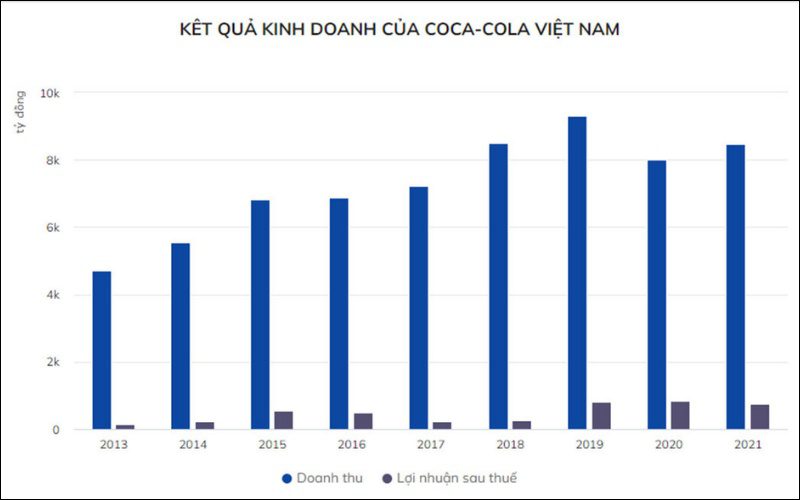
SWOT Analysis of Coca-Cola in Vietnam
SWOT is an indispensable model in Coca-Cola’s marketing strategy to achieve success and attract many target customers. This model helps the company have a comprehensive view of itself and determine the right direction. Before formulating a marketing plan, Coca-Cola marketers need to analyze the following factors:
Strengths
Coca-Cola is a familiar brand to the general public with the following strengths:
- With over 130 years of brand building and development, Coca-Cola has a significant influence on popular culture.
- Diverse beverage product portfolio from carbonated drinks, non-carbonated drinks, fruit juices, tea to coffee, creating a competitive advantage.
- Extensive distribution network worldwide, allowing Coca-Cola products to reach customers quickly and conveniently.
- Coca-Cola holds a large market share in the global beverage industry, accounting for about 40%.
- Clear, effective marketing strategy focused on building a positive brand image and inspiring people.
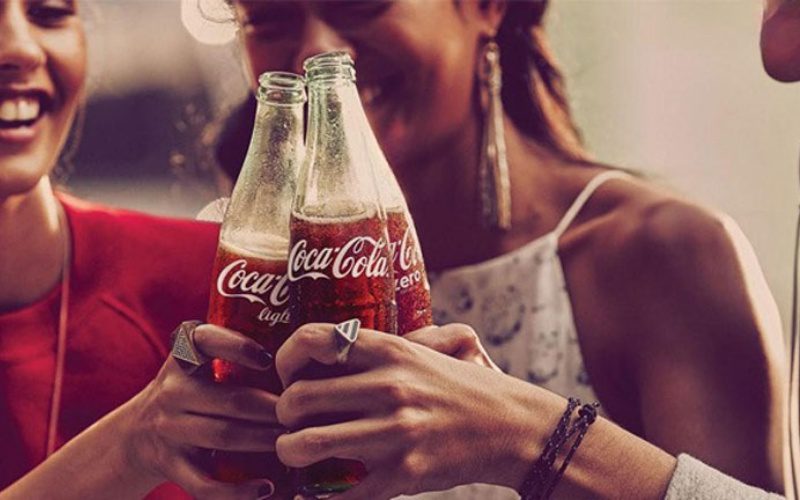
Weaknesses
Despite many strengths, Coca-Cola also has weaknesses including:
- Over-reliance on the highly competitive and trend-sensitive beverage market.
- High sugar content in products, leading to health concerns and potential legal issues.
- Coca-Cola’s production process negatively impacts the environment, including water usage, plastic waste, and greenhouse gas emissions.
Opportunities
The beverage market offers many opportunities for Coca-Cola:
- Product diversification by expanding the product portfolio through research and development of distinct flavors and meeting customer needs.
- Opportunity to exploit markets in developing countries to expand the market, thereby increasing sales and strengthening competitive position.
- The rise of e-commerce, especially Tiktok Shop, opens up many opportunities to reach target customers.
- Developing health-beneficial drinks to meet the trend and demand for healthy consumption.
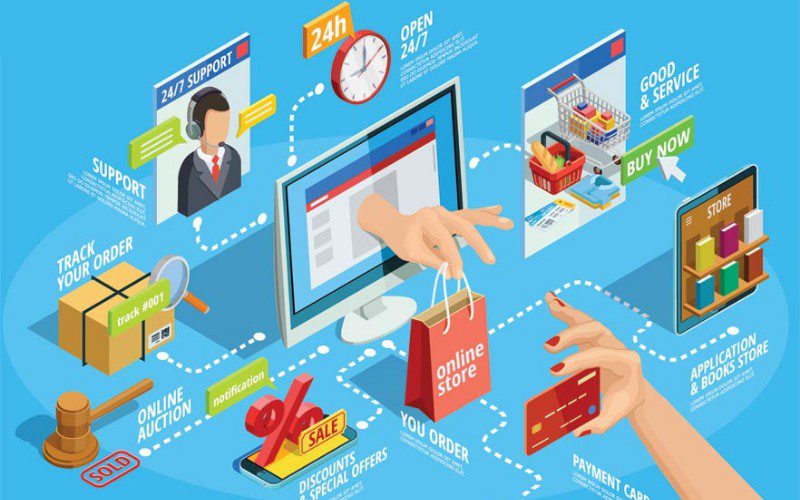
Threats
Facing opportunities for future development, Coca-Cola also has to deal with the following challenges:
- Climate change may affect the supply of water and raw materials, posing difficulties for Coca-Cola’s production activities.
- Consumer preferences may change over time, leading to reduced demand for traditional Coca-Cola products.
- Increasingly stringent health regulations may affect Coca-Cola’s sales, especially high-sugar products.
- Alternative products such as water, tea, and coffee are becoming increasingly popular, creating competitive pressure for Coca-Cola.
Analysis of Coca-Cola’s STP Model in Vietnam
STP is a popular marketing model to focus efforts on key target customer groups. Here is an analysis of Coca-Cola’s STP model in Vietnam:
Segmentation
Coca-Cola’s marketing strategy has helped the brand reach different market segments, thereby meeting diverse customer needs and preferences.
Demographics
Coca-Cola marketers have thoroughly understood target customers through demographic research and analysis including:
- Gender: Male and Female.
- Geographic location: Hanoi, Ho Chi Minh City, Da Nang, Hai Phong, Can Tho, primarily in major cities.
- Age: Teenagers (13-18 years old), young adults (18-24 years old), and adults (25-35 years old).
- Income: Minimum income of 4,500,000 VND/month.
- Education: Target customers range from elementary, middle, high school, college to university levels.
- Attitude: Love dynamism, youthfulness, sharing joy, and positive values in life.
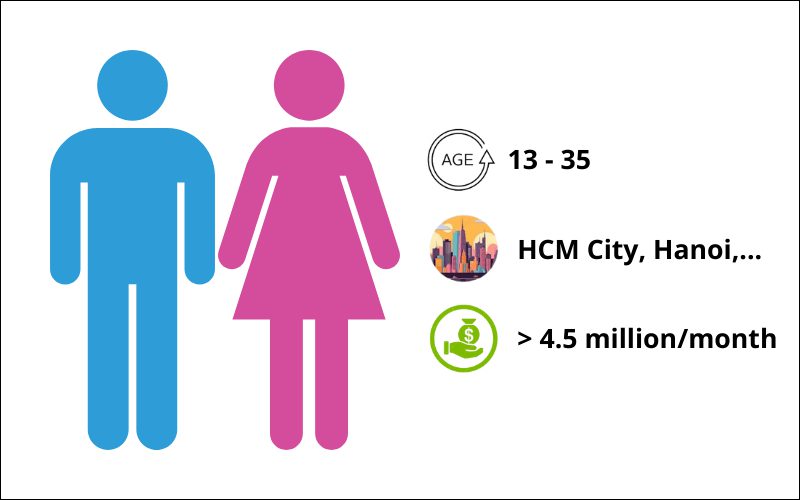
Behavior
Coca-Cola’s target customers often buy products through sales channels such as supermarkets, mini-marts, convenience stores, markets, etc. Additionally, they purchase at on-premise consumption channels including restaurants, hotels, shops, and vending machines.
Coca-Cola products are usually bought for daily meals and special occasions such as Tet, holidays, parties, and gatherings. They primarily buy habitually to solve immediate thirst needs.
Psychographics
Coca-Cola’s customers often have a dynamic, youthful, and modern lifestyle. They also enjoy participating in sports, music, travel, etc. With products like Coca-Cola Zero Sugar, Sprite No Sugar, Coca-Cola is targeting customers who are wary of high-sugar foods.
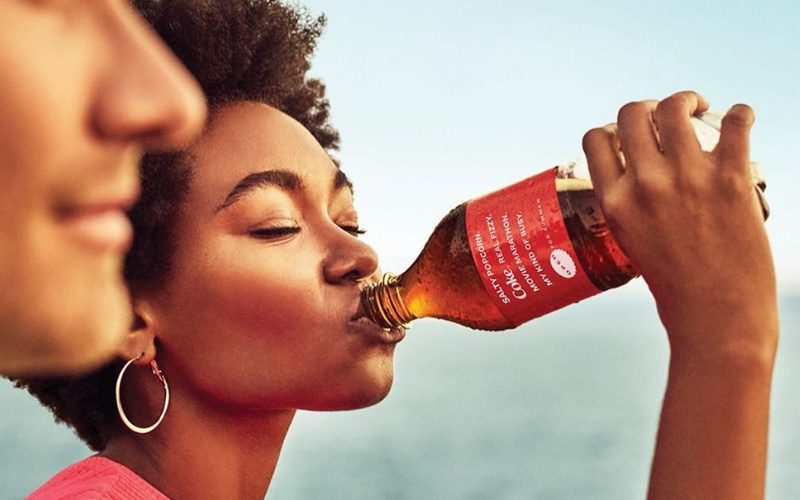
Geographic
According to geographic criteria, Coca-Cola Vietnam has developed a widespread distribution system nationwide. Currently, you can easily find Coca-Cola products in urban and rural areas, from north to south, and from lowlands to mountainous areas.
Coca-Cola products are available at many business locations such as bars, supermarkets, grocery stores, etc. This helps the company reach diverse customers in different geographical areas.
Targeting
Coca-Cola has chosen markets like Hanoi, Ho Chi Minh City, Da Nang, etc. to expand operations in Vietnam. These are major cities with high potential for product usage. Additionally, Coca-Cola Vietnam also focuses on demographic characteristics, especially the youth with high consumption needs.

Positioning
Coca-Cola is a globally famous beverage brand. The brand’s logo is the phrase “Coca-Cola” using the popular Spencerian Script font in the US combined with the characteristic red and white colors.
As a “big player” in the carbonated beverage industry, Coca-Cola always aims to bring refreshment and benefits to customers. Accordingly, the brand is built on key values such as joy, connection, and diversity. Coca-Cola aims to convey positive messages and create connections between generations.
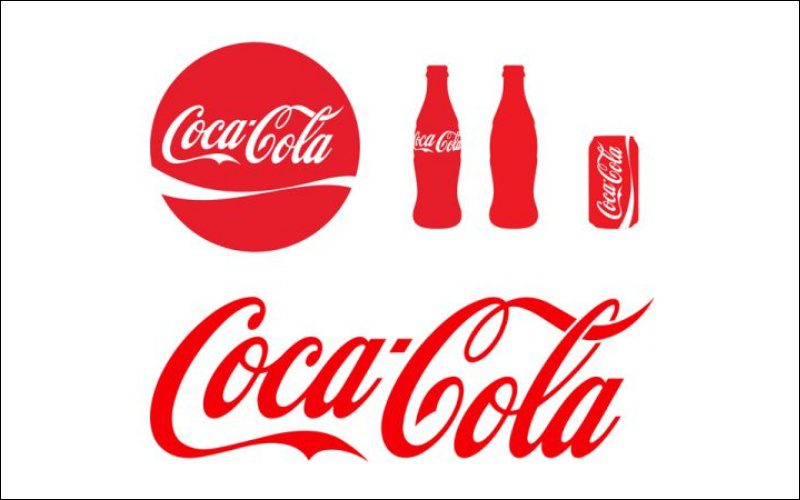
Analysis of Coca-Cola’s Marketing Strategy in Vietnam
Coca-Cola’s marketing strategy in the Vietnamese market is implemented according to the 4P or marketing mix 4P model. You can learn more about this strategy as follows:
Product
Coca-Cola always aims for product diversity to meet user needs. In 2016, Coca-Cola introduced the sugar-free Coca-Cola product to compete directly with Pepsi. This helps the company keep up with the trend and consumer demand for healthier products.
Moreover, Coca-Cola’s marketing strategy focuses on depth development and product line expansion. This is a transnational strategy that helps the company expand its market share and invest in new products suitable for the consumer taste in each location. Thanks to this, Coca-Cola has successfully positioned its brand in the beverage market.
Coca-Cola also continuously improves the design, packaging, and logo to become more modern and convenient. However, the red and white logo has been maintained since 1934 because it is deeply ingrained in customers’ minds. Notably, Coca-Cola received the Platium Pentaward 2009 award for the summer 2009 design.
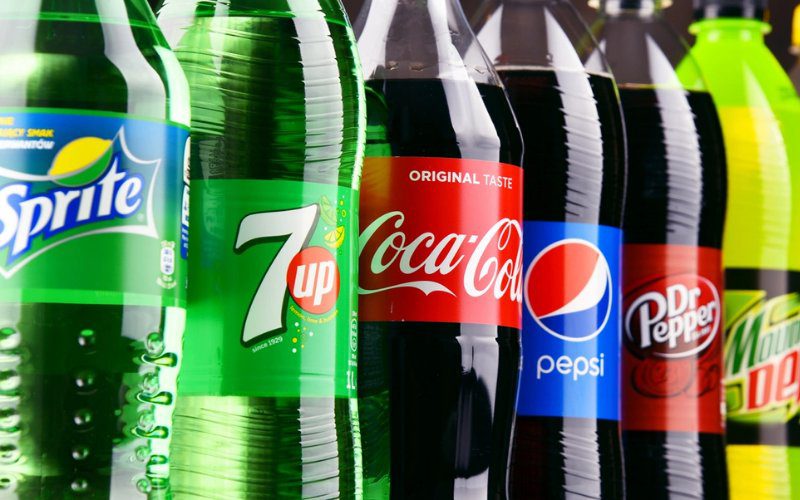
Price
Coca-Cola’s pricing strategy is adjusted to suit each product, customer segment, and target market. The brand applies a price differentiation strategy, meaning the same type of product has different prices depending on the supplier. This is because in the exclusive beverage market, companies are not affected by each other’s prices and output.
Typically, Coca-Cola sells products at a lower price compared to competitors in the same segment. They also adjust prices according to the payment capacity of each locality. Additionally, Coca-Cola offers many discounts and promotions for its suppliers and dealers.
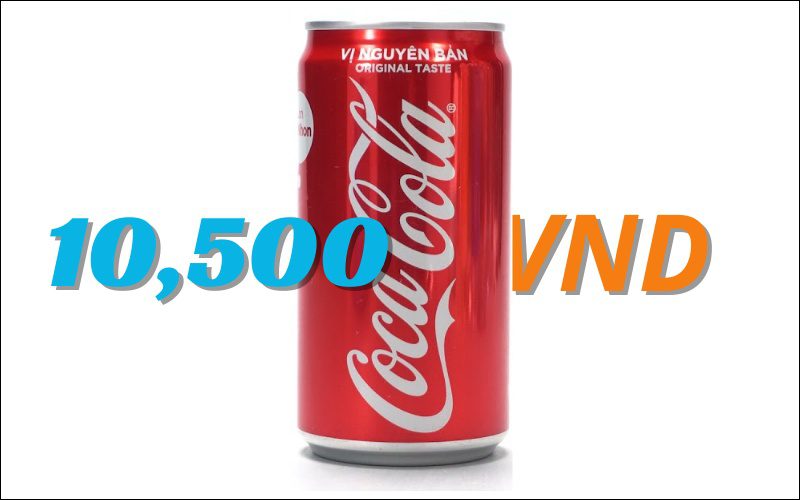
Here are some marketing price strategies Coca-Cola is currently applying:
3P Strategy
- Price to value: Customers buy Coca-Cola not only to quench their thirst but also for the benefits it brings.
- Pervasiveness: The extensive distribution system helps the product to be available everywhere.
- Preference: The brand is the top choice when customers want a carbonated drink.
3A Strategy
- Affordability: Selling prices are suitable for the majority of customers’ payment capacities.
- Availability: Coca-Cola can be purchased anywhere and at any time.
- Acceptability: Developing products towards satisfying and pleasing customers.
Place
Distribution is an important factor in Coca-Cola’s marketing mix strategy. Moreover, this factor plays a significant role in the brand’s success. Coca-Cola currently owns a nationwide product distribution system. This helps bring products to consumers quickly. Coca-Cola’s distribution channels include:
- Direct distribution channel: Shopee, Lazada, Tiki,… are platforms that help consumers easily find and order products. The direct channel helps Coca-Cola sell products while capturing market situations and needs.
- Retail distribution channel: Coca-Cola distributes products through many retail stores, supermarkets, grocery stores, and dealers with certain support and discounts. The brand also focuses on product display, helping to expand the market and reach customers.
- Key account channel: Organizations, schools, hospitals, events,… are key account targets. Due to their special nature, Coca-Cola has preferential pricing and marketing support policies for these customers to encourage product use.
Read more: Analyzing Coca Cola’s supply chain model in Vietnam
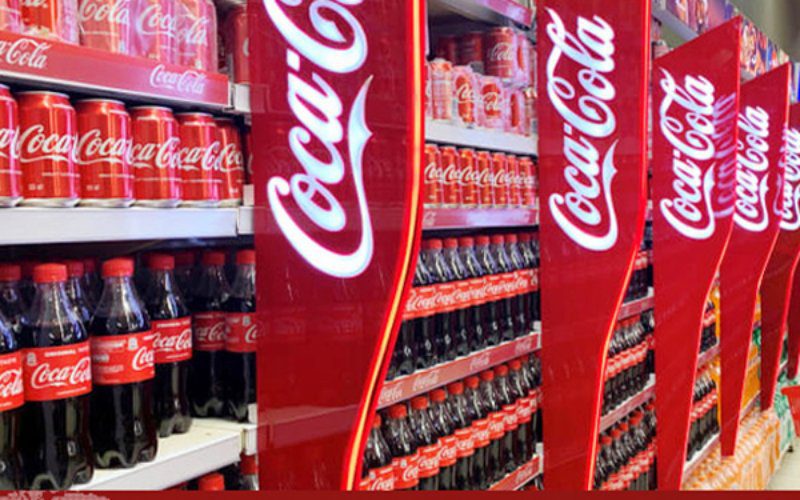
Promotion
Promotion is a special element in Coca-Cola’s 4P marketing strategy. Accordingly, the brand creates demand for its products in the market by integrating lifestyle and daily behaviors into advertising campaigns. Consumers may notice that Coca-Cola advertisements are personalized for individuals on special occasions or when Coca-Cola wants to convey positive messages to the community.
Coca-Cola maintains consistency in conveying its message to consumers by making it clear, simple, and friendly. This helps the brand effectively communicate its message and easily access customers. Some successful campaigns of Coca-Cola include “Enjoy,” “You Can’t Beat the Feeling,” “Happiness,” and more.
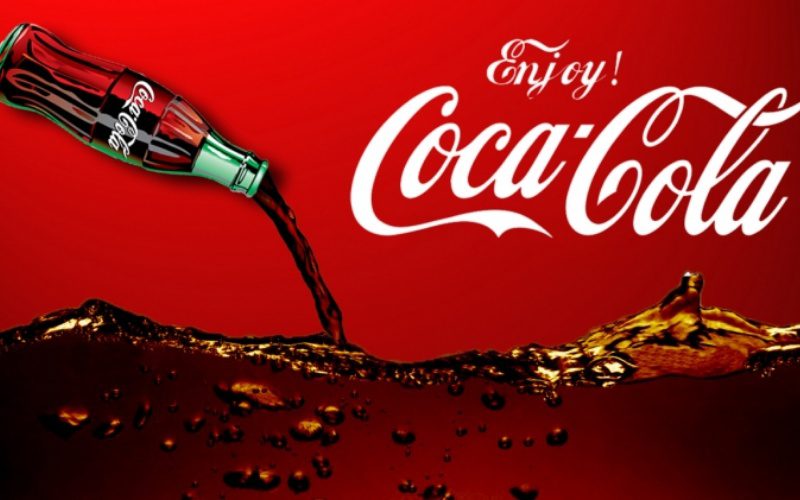
Some of Coca-Cola’s Marketing Campaigns in Vietnam
Although a leading brand in the beverage industry, Coca-Cola still spends about $3 – $4 billion annually to reach target customers worldwide. Below are some campaigns that the brand has conducted in Vietnam:
Advertising Through Media Channels
According to TNS Vietnam, Coca-Cola spent approximately $1.5 million on traditional media advertising campaigns in Vietnam in 2008. This significant investment contributed to the brand’s success as it stands today.
Television Advertising Strategy
Coca-Cola Vietnam utilizes popular television channels such as VTV, HTV, VTC, THVL, etc., to advertise its products. Additionally, the brand continuously invests in short films, advertising clips during special occasions to create an impression and attract consumers.
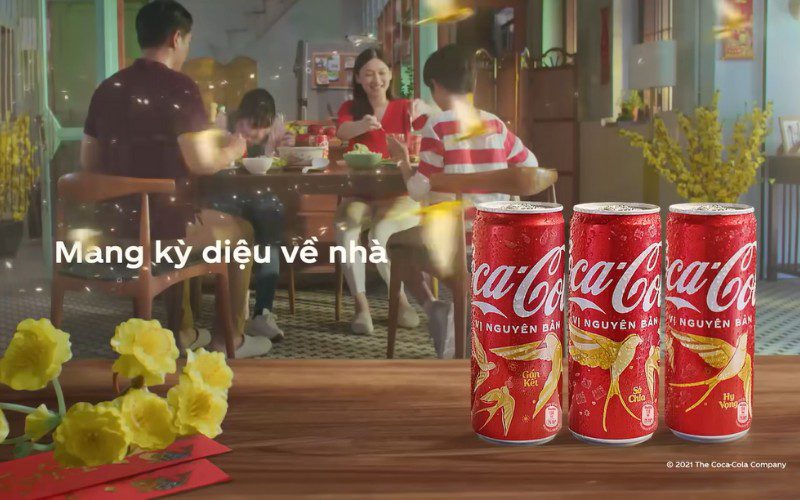
Outdoor Advertising Strategy
Apart from television advertising, Coca-Cola Vietnam places billboards in prominent and bustling locations such as Le Duan, Dong Tay, Ton Duc Thang, markets, pedestrian streets, and densely populated areas.
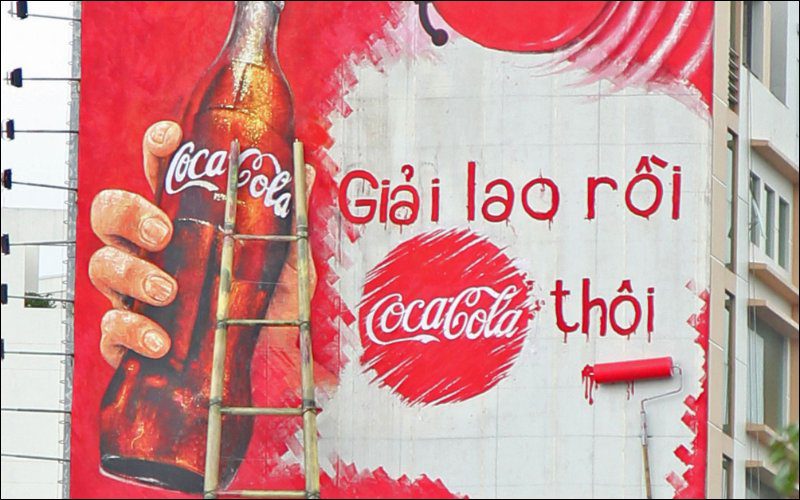
Social Media Advertising Strategy
The brand leverages social media platforms like Facebook, Instagram, YouTube to introduce its products through videos, posts, and engaging online contests.
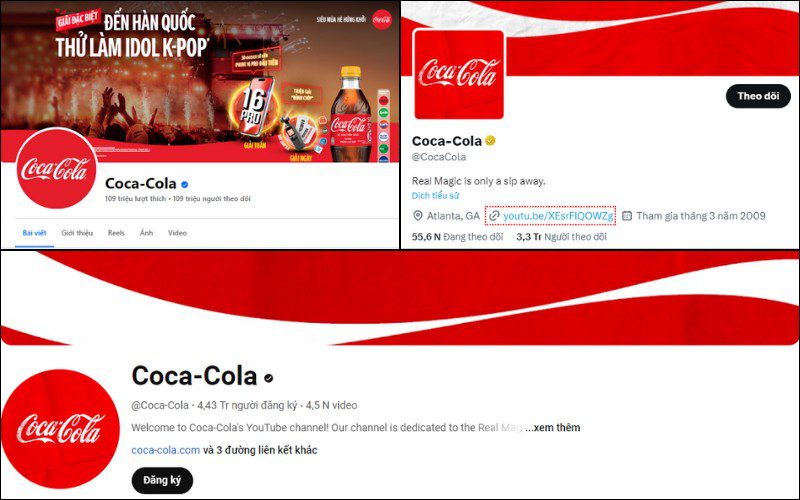
Event Advertising Strategy
Coca-Cola Vietnam organizes various events to attract customers, such as the Coke Studio music festival featuring famous singers. Additionally, the brand brings fun and meaningful programs like “Journey to Tet Full of Joy” and “Enjoy Fun with Coca-Cola” to various locations.
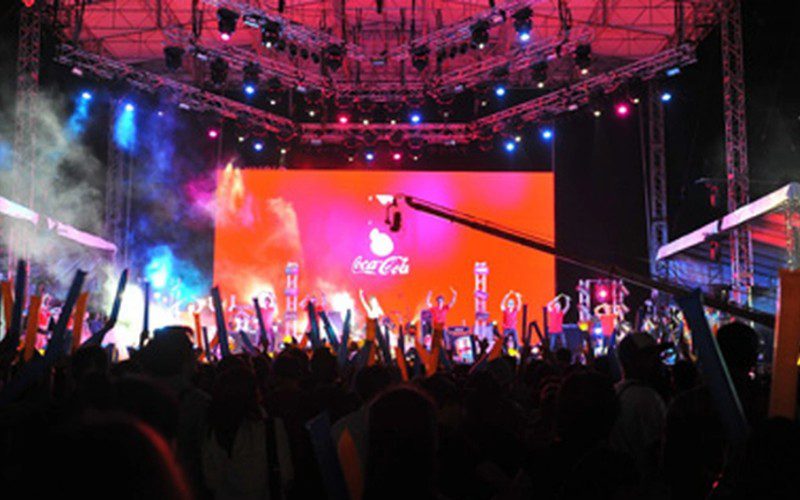
“Shake A Coke” Campaign
Coca-Cola executes the “Share a Coke” campaign to foster connection with customers worldwide. This campaign has been implemented in over 50 countries, including Vietnam. The campaign’s message is customized based on the characteristics of each region.
“Share A Coke” creates Coca-Cola bottles with Vietnamese names, encouraging customers to share their emotions on social media. The main message of the campaign is “Connect, unite, and share comfortable moments together with Coca.” Especially, Share A Coke targets young people who love using social media and often share images.
The number of photos shared on social media with the hashtag #ShareaCoke reached over 6 million by September 2015. Additionally, Coca-Cola attracted nearly 25 million followers on Facebook and sold 250 million Coca-Cola bottles in just one summer. These impressive figures are clear evidence of the campaign’s success in creating positive consumer interactions.
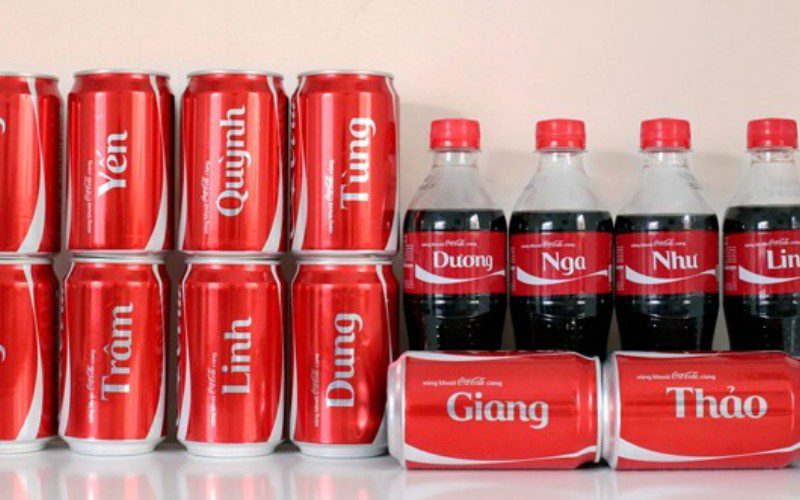
“Coca-Cola Uplift” Campaign
From late 2018 to early 2019, the AFF Suzuki Cup became a “golden opportunity” for Coca-Cola to implement an effective marketing strategy. Recognizing the strong football passion of Vietnamese youth, Coca-Cola launched the “Coca-Cola Uplift” campaign to share the vibrant joy of Vietnamese fans during the tournament.
As the official sponsor of the Vietnam national football team, Coca-Cola aims to elevate the importance of national football. Players will receive better support in terms of health, training conditions, and more opportunities to compete and train domestically and internationally.
Millions of football fans continue to follow and hope for a second victory, bringing the precious gold cup back to the nation. This campaign by Coca-Cola appeared timely and demonstrated success through increased sales, social media following, and enthusiastic consumer participation.
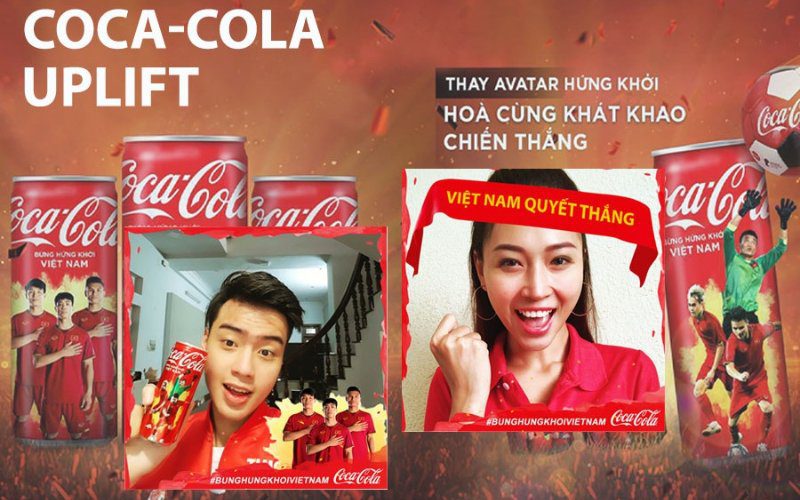
Business Lessons from Coca-Cola’s Marketing Strategy
Through the analysis of Coca-Cola’s marketing strategy, we can draw several interesting business lessons:
- Not just about revenue: Coca-Cola focuses not only on sales and profit but also on creating positive changes in consumers’ lives.
- Creative “viral” content: The “Share a Coke” campaign is a prime example of creating highly viral content that attracts attention across various channels.
- Engagement and unity: The key to building a strategy is engagement and alignment with customers’ common goals and benefits. This ensures consistency in Coca-Cola’s marketing strategies.
- Continuous creativity: Coca-Cola’s relentless creativity keeps consumers interested, aligns with market trends, and meets customer needs.
- Brand positioning: Coca-Cola creates consistent brand recognition. Additionally, the brand leverages senses such as sight, sound, and smell to leave a deep impression on customers.

Conclusion
The above analysis of Coca-Cola’s marketing strategy in the Vietnamese market provides insights that can help optimize your own strategy for the best results. Don’t forget to follow the Case Study Business section for more interesting information!
Read more:



